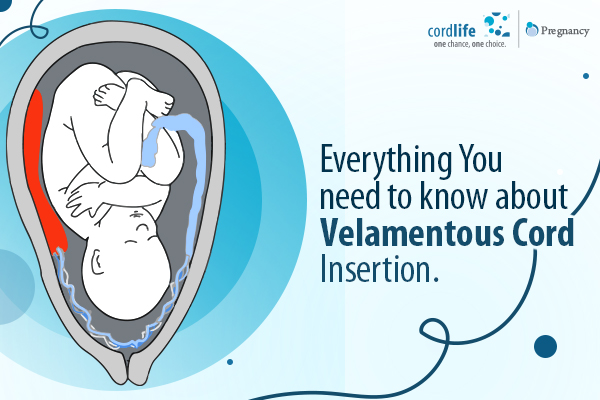Table of Contents
When it comes to your growing baby, the umbilical cord is their lifeline. It carries everything your baby needs for survival and also disposes of your baby’s waste. Hence, is there is an abnormality in their umbilical cord can put your pregnancy at a greater risk. One such abnormality is a velamentous cord insertion, in which the umbilical cord is abnormally inserted into the placenta, leaving the baby’s blood vessels unprotected. While this is a rare occurrence, it needs to be monitored, and with the proper care, the risk of complications is low.
How Is It Diagnosed?
An ultrasound scan of the umbilical cord and placenta will be required to make the diagnosis. While it usually occurs in the second trimester, some cases can be diagnosed in the first trimester.
Can You Have A Velamentous Cord Insertion?
While it is an extremely rare abnormality, you could be at a higher risk for the following reasons:
- If you are diagnosed with either placenta previa or vasa previa
- If you are carrying identical twins who share the same placenta
- If you have an IVF pregnancy
- If you get pregnant when you’re older
Are There Any Complications That Can Affect You And Your Baby?
The good news is that this condition is unlikely to harm your baby in the womb. However, there are chances of preterm birth, small-for-gestational-age baby, or a low Apgar score when it comes to your baby. Your baby may also need to be admitted to the neonatal intensive care unit (NICU) after delivery. When it comes to your pregnancy, the chances of complications are low, but it’s best to be aware of it:
- Umbilical cord vessels: Since the umbilical cord vessels are unprotected, there are greater chances of compression or rupture.
- C-section: If the exposed umbilical cord vessels tear during labour, you will require an emergency C-section.
- Placenta delivery: Your doctor may need to manually remove your placenta after delivery.
- Hemorrhage: In some cases, there is a risk of bleeding when the placenta is delivered.
What Will Happen After You’re Diagnosed With This Condition?
After such a diagnosis, your doctor will recommend more frequent ultrasound scans to monitor the position of the placenta. To carefully track your baby’s growth, your doctor may also recommend weekly nonstress tests. If your scans and tests are regular, your doctor will not require to induce labour, but will also not advise you to stay pregnant for more than 40 weeks. If you also have placenta previa or vasa previa, your doctor may suggest a C-section depending on its severity. However, when you go into labour, you and your baby will be continuously monitored. After delivery, it may take longer to deliver your placenta, since the doctor will not pull the umbilical cord to get the placenta to detach. However, there’s no need to worry about this, as you will be monitored during the entire process.
Unfortunately, a condition like this cannot be predicted or avoided. It’s a rare condition, with even rarer chances of further complications – you will need more ultrasound scans.
